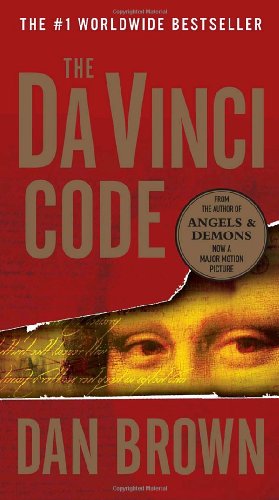All Nonfiction
- Bullying
- Books
- Academic
- Author Interviews
- Celebrity interviews
- College Articles
- College Essays
- Educator of the Year
- Heroes
- Interviews
- Memoir
- Personal Experience
- Sports
- Travel & Culture
All Opinions
- Bullying
- Current Events / Politics
- Discrimination
- Drugs / Alcohol / Smoking
- Entertainment / Celebrities
- Environment
- Love / Relationships
- Movies / Music / TV
- Pop Culture / Trends
- School / College
- Social Issues / Civics
- Spirituality / Religion
- Sports / Hobbies
All Hot Topics
- Bullying
- Community Service
- Environment
- Health
- Letters to the Editor
- Pride & Prejudice
- What Matters
- Back
Summer Guide
- Program Links
- Program Reviews
- Back
College Guide
- College Links
- College Reviews
- College Essays
- College Articles
- Back
The Da Vinci Code by Dan Brown
Robert Langdon, a Harvard professor and world renowned symbologist, has been framed. It all started with the murder of the curator of the Louvre in France, Jacques Sauniere, and his dying message. He wrote “13-3-2-21-1-1-8-5 O, Draconian devil! Oh, lame saint! he also wrote under it, P.S. find Robert Langdon. This made The police suspicious, so they brought Robert Langdon over to interrogate him, but he fled the scene. Will he decode the message and learn the curators secret? Read The Da Vinci Code to find out. The author of The Da Vinci Code is Dan Brown and he is an amazing author. There are so many twists and turns in his mystery books you never know what’s coming next. I have lots of fun reading all of the other books in the series like Angels and Demons and The Lost Symbol. I think you will too, and here’s why!
First of all, I think every single character in this great book is amazingly created, and beautifully described. But, if I had to choose a favorite, I would say Sir Leigh Teabing. Leigh is a revered historian who knows a lot about the holy grail and a secret organization known as the Priory of Sion (they protect the secrets of the grail.) He is a jolly old man who needs crutches to walk, but he doesn’t let that bring him down and he is still very enthusiastic. Leigh has also been knighted by the queen as his title ‘sir’ might show.
The Da vinci code takes place in Paris, France and England in modern time. One of my favorite events takes place at the Louvre, a museum in Paris. In this scene Robert langdon has to escape with his accomplice named Sophie from the Judicial police because they suspect Robert of a murder. When He and Sophie meet up she immediately removes a tracking chip from his pocket that the interrogator slipped in. She then shoves it in a bar of soap smashes the window and throws it into a passing truck to make it seem as if they jumped into it from the bathroom, but they really just walk right out the front door.
One of my favorite things about this book is how it uses Robert’s profession, symbolism to tell stories and decode secret messages. An example of this from the text is “Moving on, the female symbol as you might imagine, is the exact opposite. He drew another symbol on the page. This is called a chalice.” He then goes on to explain that a chalice is a symbol for female and the symbol also looks like a cup. Another word for cup is grail, and they are searching for the holy grail which means the holy grail isn’t a cup but... a woman!
There aren’t many negative things in this book but I think there are a few things he could have done better. One of the things he could have improved is adding more action into the book. I feel like it could have been a lot more action-packed and exciting, but he just cut it short. For instance, whenever there is a potential for conflict between the characters, he lets the protagonist escape easily.
The setting of the Da Vinci Code affects the characters and plot in more ways than one. In France some laws are different than here in the U.S. which means Robert could have gotten in trouble with the law for many different reasons. The characters also behave differently. In this the head of the police, Fache, has a vendetta against Robert for no reason at all and in other countries with different cultures this might not occur.
Dan Brown’s idea for The Da Vinci Code came from his character Robert Langdon who he had in books before like Angels & Demons and thought this would be an interesting take on the Harvard professor. I absolutely loved this book and I would give it a ten out of ten. One of the main reasons I liked this book is how Dan Brown describes the setting and the characters and can give you a really clear picture of it in your head. An example of Brown’s exceptional writing is this “The pathway to the main entrance was hand-laid cobblestone. It curved to a door of carved oak and cherry with a brass knocker the size of a grapefruit.” This story is appropriate for anyone 13 years old and up.
Similar Articles
JOIN THE DISCUSSION
This article has 0 comments.

